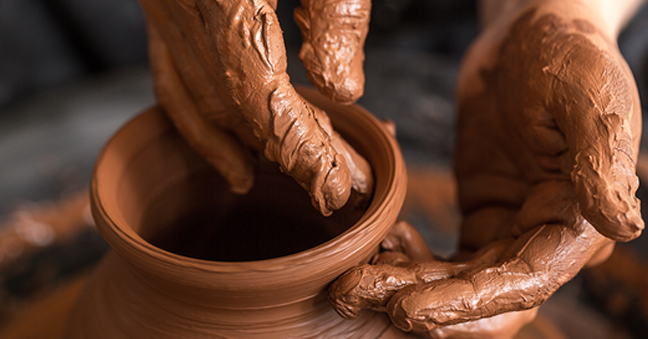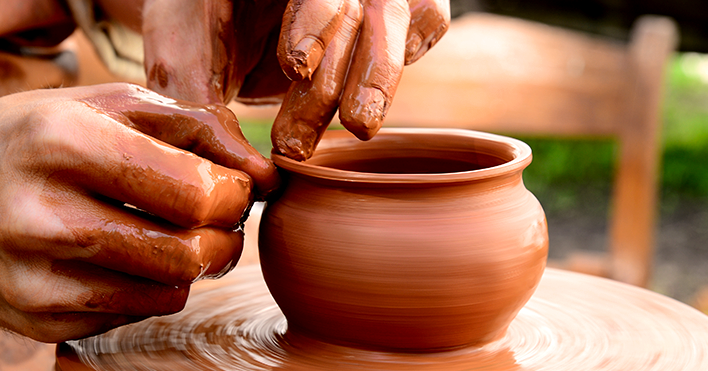Nestled inside the suburbs of Tambaram, Thiruneermalai is a sleepy town prominently known for the famous Ranganathar Temple, located on top of a listed Mesolithic site recognized by the government of Tamil Nadu. Little known is the fact that the town is reviving one of the oldest art forms, pottery, considered the first invention of humanity. The hillock is about 10 minutes away from Tambaram even though buses seldom ply. Thriving communities surrounding the temple are a common sight in any part of the world since places of worship acted as a harbinger of economic change throughout human history. Walking towards the famous temple led me to the place of the much-admired art.
The fragrance that emanates when a pound of clay is mixed with water filled the air and heaps of burnt pots were found near the entrance. A pan-generational family of 8 people welcomed me with an innocent smile. “Vanga, Vanga” (Welcome), in chorus/ in a single voice.
The eldest of the family introduced himself as Muthu, an octogenarian who is involved in pottery for more than four decades. “My day starts even before the sun is up, that is, around 4.00 a.m., and I make pots till 9.00 a.m. The work gets started after collecting the sand that lies on the roadside. The sand is sieved until soft and the powdery dust is mixed well with the clay. The two ingredients are measured depending on the article we make. For instance, to make a small pot, finely powdered sand is added more. I see people toiling day in and day out to lose weight and maintain their bodies but our work gives us good health,” said Vinoth, son of the octogenarian.

After meticulously shaping the clay, the pot has to be dried completely. The dried pot is then fired with heaps of dry straw. If the composition of the firing materials goes wrong or the quality is below par, the object cracks and sometimes crushes completely with a touch. “Once the pots are fired, we give red soil coating and paint it with bright colors which are usually done by the women folks in our family,” said Mani, a third-generational potter.
“I was invited by the Government Fine Arts College, Chennai, for a demo and a lecture. I denied it because I feel that the actual purpose of the art has transformed totally to a different dimension. It cannot be learned through formal education. Everything has become a business now. Though we are into the art for four generations, I don’t expect my grandchildren to be on the same line, given its present state,” said Muthu.
“The future of the art lies in the availability of the clay and soil. We almost spent Rs 15,000 to get the clay before Ganesh Chathurthi. The cost is almost five times the usual spend. The biggest threat to the art is changing weather patterns. We usually will not work in the month of December and January owing to the rains, but now we are not able to predict the weather change,” added he.
Climate change is making the lives of these people unpredictable. The advancement of science has given us refrigerators to drink cold water instantly, and chemicals to create beautiful artificial dolls that have replaced the traditionally created toy models made of clay and soil. This has created a big impact on the traditional industry which is thriving to identify itself in the fast-moving world.
A modern touch to a traditional art form is expected to be a silver lining for this community, such an impetus to this art form is social media. The pictures and videos have a great visual appeal to it and the traditional art form has gained fame through such activities. Amateurs are increasingly getting involved in handicrafts all over the world, leading to the boom of such activities from one-off sessions at IT parks to lifelong learning by conducting workshops. The sessions help them to slow down their pace and make time for themselves.
Handling the wet damp clay is proving to be effective to calm the mind. There is a set of procedures that must be followed, it is a slow process and unlike in the digital world, there is no undo button here. There are always unpredictable organic effects that discourage total control over the process. It is perhaps no surprise that the art form is booming. The challenging times due to Covid19 have taught humanity the importance of mindfulness, mental health, and patience and pottery has become more of a hobby and an antidote to the digital world.


